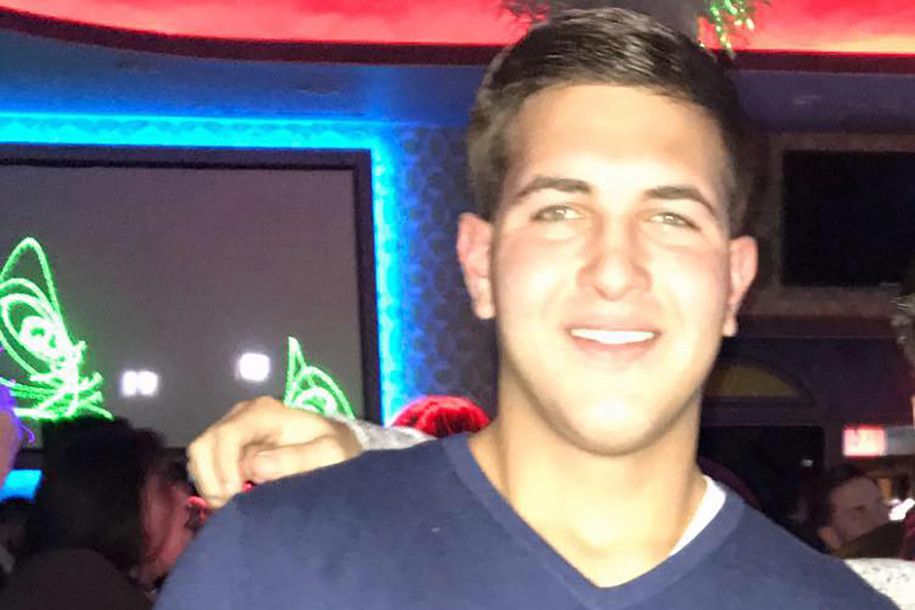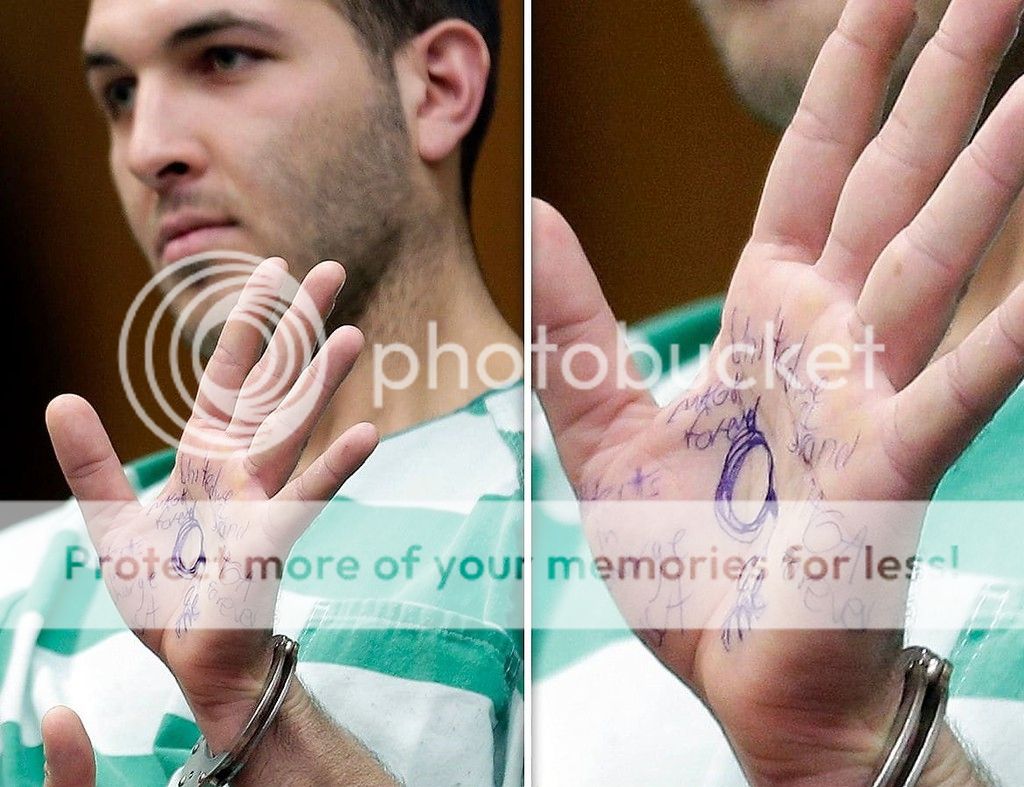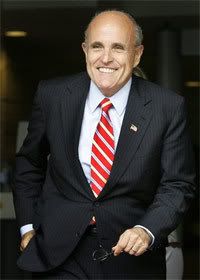The trial of Joaquín Guzmán Loera, and his conviction Tuesday on drug-smuggling charges, brought to an end the decades long career of the notorious “El Chapo.” It also revealed in remarkable detail the inner workings of the criminal empire he built, one that rivaled governments and multinational companies in its power and sophistication.
After a three-month trial, the 61-year-old, who escaped twice from maximum-security prisons, was found guilty on 10 criminal counts by a federal jury in Brooklyn, N.Y. He is expected to spend the rest of his life in a U.S. prison.
Trial testimony laid bare the secrets of the Sinaloa cartel’s organizational structure, including how cocaine and marijuana rumbled across the U.S. border in the walls of freight trains, how in-house tech experts built encrypted communications networks and how the cartel moved money around using debit cards, suitcases of cash and private planes. It even built its own rail spurs to unload shipments.
At times, the underlings of Mr. Guzmán who testified sounded as if they were describing corporate life. Former operations managers detailed infrastructure, accounting ledgers, supply-chain issues and the need to “protect the capital of the investors.” Mr. Guzmán often referred to the cartel as “la empresa,” or “the company.”
The cartel, of course, was no ordinary business. Prosecutors alleged Mr. Guzmán was involved in dozens of murders, and had ordered the burning of two cartel enemies after he had shot them in the head. Cartel leaders also allegedly paid millions in bribes to every level of Mexican law enforcement, which helped them to stay in operation for decades.
The U.S. has called the Sinaloa cartel Mr. Guzmán ran the largest drug-trafficking organization in the world. The murders and bribes facilitated its primary goal: maximizing the profits from smuggling illegal drugs into U.S. cities for sale to American users.
Mr. Guzmán’s lawyers said during the trial he wasn’t the real cartel leader and had no money. After the verdict, they said he didn’t get a fair trial and planned to appeal.
At the center of the action, as described by trial witnesses, was Mr. Guzmán, who evolved from an impoverished teenager growing poppies in front of his house in Sinaloa to a ruthless drug kingpin willing to kill anyone who disrespected him. He owned a private zoo, paid his workers in diamond watches and had girlfriends who helped him coordinate drug shipments. He reveled in his notoriety, even seeking to get a movie and book made about himself.
Mr. Guzmán was just a young smuggler in 1990 when he made a pitch to a Colombian cocaine supplier in a Mexico City hotel lobby. Pay me 40% of your drug shipment, he said, and I will get it across the U.S. border faster than anyone, the supplier recalled in court testimony. The price was higher than that of other Mexican traffickers, but Mr. Guzmán promised both speed and security, thanks to the stable of federal police he had bribed.
The Colombian, Juan Carlos Ramírez Abadía, flew his first drug shipment to Mr. Guzmán on five planes that landed at a clandestine airstrip in Sinaloa, Mexico. In less than a week, Mr. Guzmán smuggled more than 5,000 pounds of cocaine from Mexico into Los Angeles.
Their partnership lasted for almost two decades. Along the way, Mr. Guzmán escaped twice from maximum-security prisons in Mexico. Prosecutors say he made at least $14 billion in drug profits before his luck finally ran out when he was captured in 2016, and later extradited to New York.
The cartel was a collection of drug bosses who each controlled their own territory in Mexico, known as a “plaza.” The Sinaloa state, where Mr. Guzmán was born, was the most important plaza, partly because it had a long shoreline for receiving cocaine shipments.
Mr. Guzmán was one of the cartel’s four main early leaders, according to the testimony of Jesus Zambada García, who coordinated the cartel’s operations from 1992 until his arrest in 2008.
Underneath them were sub-leaders who managed the plazas and hundreds of other workers. Pilots and drivers ferried the drugs. Engineers set up secure communications. Security guards protected the drug loads and the cartel leaders. Hit men known as sicarios carried out beatings, kidnappings and murders of cartel enemies.
Most important, the cartel established a payroll for corrupt officials who escorted drug shipments and tipped off cartel members about law-enforcement operations. The salaries for corrupt officials exceeded $1 million a month, one witness testified.
Mr. Guzmán allegedly paid $100 million in 2012 to Mexico’s then-President-elect Enrique Peña Nieto, according to the testimony of Mr. Guzmán’s former secretary. A spokesman for Mr. Peña Nieto has called the accusation “false, defamatory and absurd.”
In the mid-1990s, Mr. Guzmán and the other bosses began a profit-sharing model to protect against drug seizures by law enforcement. Under the model, each cartel investor shared the risk of lost or seized shipments and the upside for successful shipments. The new setup significantly strengthened the cartel.
The most secure way to get drugs across the U.S. border, witnesses said, was through tunnels. In the late 1980s, the cartel wheeled bricks of cocaine through an underground tunnel it dug from Agua Prieta, Mexico, to Douglas, Ariz. The Mexican entrance was covered by a pool table that lifted from the concrete floor with a hydraulic system. Law enforcement discovered the tunnel in 1990 after a cartel member forgot to lower the pool table.
Mr. Guzmán, one of his early friends testified, needed to quickly figure out a Plan B to move tons of cocaine inventory. Cartel members hatched a plan to smuggle cocaine across the Tijuana border to Los Angeles on large trucks inside jalapeño cans.
The cans were packaged in Mexican warehouses using labels that imitated those of a real chile-pepper company. Workers packed them with a special gravel that would mimic the sound and weight of water if they were shaken by inspectors.
When Colombian suppliers complained the packaging was damaging their product, Mr. Guzmán asked the suppliers to send cocaine in a cylindrical mold instead of the usual rectangular brick.
Mr. Guzmán also came up with a way to move the drugs by train. At the ends of each train car, Mr. Guzmán’s workers welded metal walls where vacuum-sealed bags of cocaine and marijuana were hidden. The bags were smeared with grease to ward off drug-sniffing dogs, and workers poured 2 inches of oil to the bottom of the train car to deter U.S. inspectors from stepping inside.
The cartel leased warehouses and train cars using front companies that looked like legitimate businesses importing cooking oil. Workers installed train spurs inside warehouses in cities such as Chicago and New York, where they could park the trains and sledgehammer the drugs out of the metal walls without arousing law-enforcement suspicion. The trains returned to Mexico carrying legitimate cargo.
Tirso Martínez Sanchez, who handled logistics for the train route, testified that the trains carried up to $800 million worth of drugs into the U.S. Law enforcement discovered the trains in 2002 and 2003. One amounted to the biggest drug seizure in New York City at the time.
Whenever the U.S. ramped up border security, the cartel would recruit people, including families with U.S. citizenship, to drive across legal ports of entry in cars with hidden compartments, stuffed with drugs and cash. In a single day, the cars could smuggle in more than 400 pounds of cocaine, one witness testified. After the drugs arrived in the U.S., they would leave the cartel’s warehouses in vans and trucks.
Mr. Guzmán welcomed international partners. The cartel worked with the Italian mafia to sell cocaine in Canada, one witness said. Dominicans helped distribute the cartel’s heroin and cocaine in New York City. Cartel lieutenants said they obtained methamphetamine from China and heroin from Thailand.
Laundering the millions of dollars in drug proceeds, typically denominated in small U.S. bills, was a separate challenge.
The drug money often came back to Mexico in cars. In 1989, Mr. Guzmán’s brother, Arturo, was stopped as he was driving across the Arizona border carrying more than $1.2 million in cash.
Mr. Guzmán purchased private jets to pick up the cash at the border and fly it back to Mexico City, where it would be wheeled in suitcases to be deposited at banks, according to the testimony of his former money manager Miguel Angel Martínez. Each jet would contain at least $8 million.
Architects built stash houses for Mr. Guzmán with beds that could lift above the ground, revealing passages to underground safes. Mr. Martínez said the largest amount stored in a single location was more than $20 million.
To move money from New York to Colombia and Ecuador to buy more cocaine, the cartel used debit cards that could be loaded up with as much as $9,900 per card. Unlike cash, which is made of linen that can absorb drug residue and attract drug-sniffing dogs, debit cards can be easily cleaned. After the cards arrived in South America, the cartel hired workers to withdraw the money from ATMs.
Mr. Guzmán invested in cutting-edge communications technology to avoid detection by authorities, hiring engineers to travel to the U.S. to buy the latest equipment. Early on, cartel members cloned other people’s phone numbers to make calls. Mr. Guzmán changed his cloned number every three or four days, one witness said.
Mr. Guzmán told his workers to communicate only via BlackBerry phones when crossing the U.S. border, thinking they were safer than radios.
In 2008, he hired as his top tech specialist a millennial college dropout with his own startup. Christian Rodriguez, a young cybersecurity expert, told Mr. Guzmán that BlackBerry messages weren’t safe. He testified he built an encrypted network that allowed Mr. Guzmán to securely call dozens of cartel members, and set up a cloud server in Canada because he had read about the country’s strong privacy laws.
Mr. Guzmán asked Mr. Rodriguez to install spy software that would let him track the locations of his associates’ phones and remotely turn on their microphones to eavesdrop on their conversations. He wanted to hear what his workers, including girlfriends, were saying behind his back.
The success of the Sinaloa cartel spawned deadly wars with rivals that were bad for business, former cartel workers said. Drug seizures ramped up, and American authorities slowly turned Mr. Guzmán’s close associates into cooperators.
Mr. Guzmán spent his last few years of freedom running from authorities, sometimes sleeping on the ground in the mountains and waking up every half-hour, according to his lieutenant at the time. Even so, Mr. Guzmán kept coordinating cocaine purchases from Ecuador for shipment to the U.S., the lieutenant said, protected by an army of bodyguards.
After his final arrest, a month before his extradition to the U.S., Mr. Guzmán was still planning another escape. The reason, said a federal prosecutor, was because “he never wanted to be in a position where he would have to answer for his crimes.”
Thanks to
Nicole Hong.
 , who was in charge of investigating whether Hillary Clinton’s use of a private email server compromised classified information and national security, had a conflict of interest. In exchange for a promise not to indict her, Mr. Trump maintained, Mrs. Clinton had directed Virginia Gov. Terry McAuliffe to transfer $700,000 to the campaign coffers of Mr. McCabe’s wife, who was running for the Virginia state senate.
, who was in charge of investigating whether Hillary Clinton’s use of a private email server compromised classified information and national security, had a conflict of interest. In exchange for a promise not to indict her, Mr. Trump maintained, Mrs. Clinton had directed Virginia Gov. Terry McAuliffe to transfer $700,000 to the campaign coffers of Mr. McCabe’s wife, who was running for the Virginia state senate.





 in 1986, an informant told the FBI, according to testimony in October of 2007, in Brooklyn state court. But while the late Gambino crime boss
in 1986, an informant told the FBI, according to testimony in October of 2007, in Brooklyn state court. But while the late Gambino crime boss 


